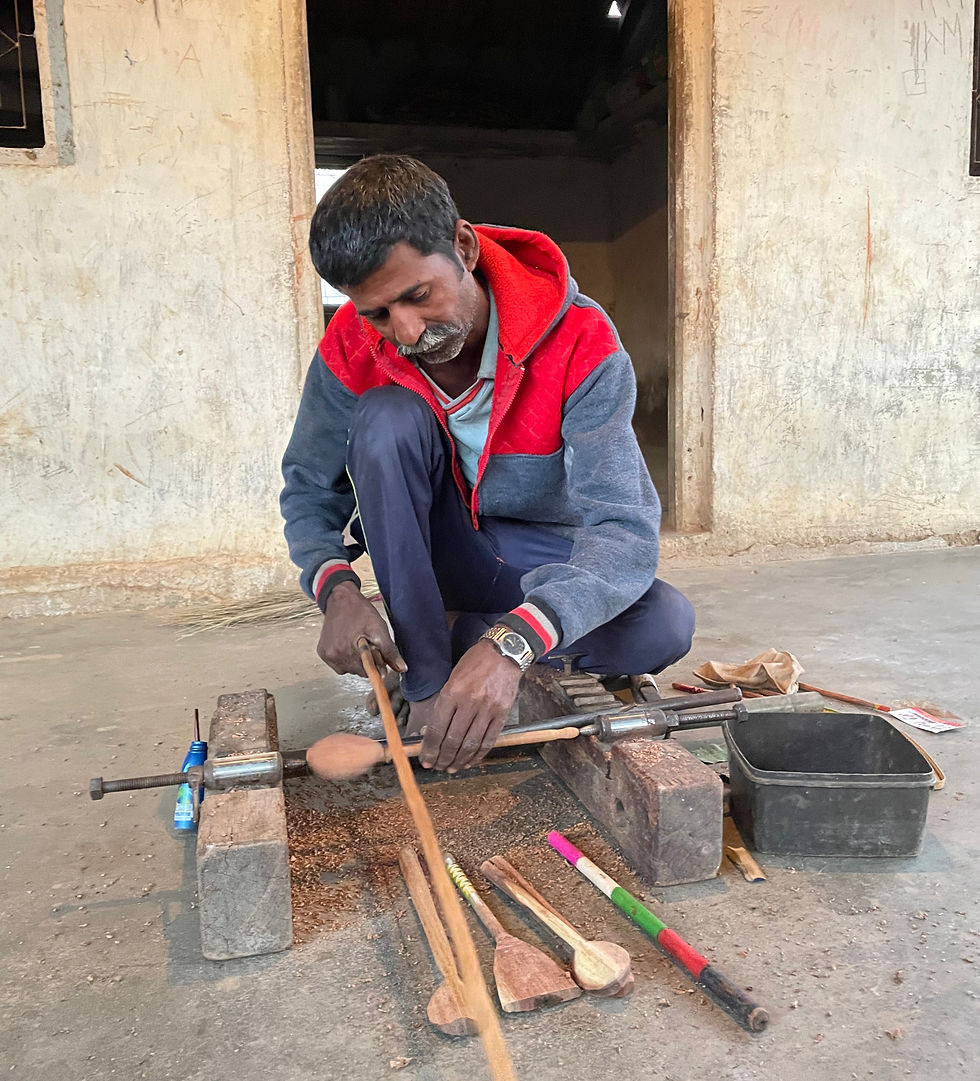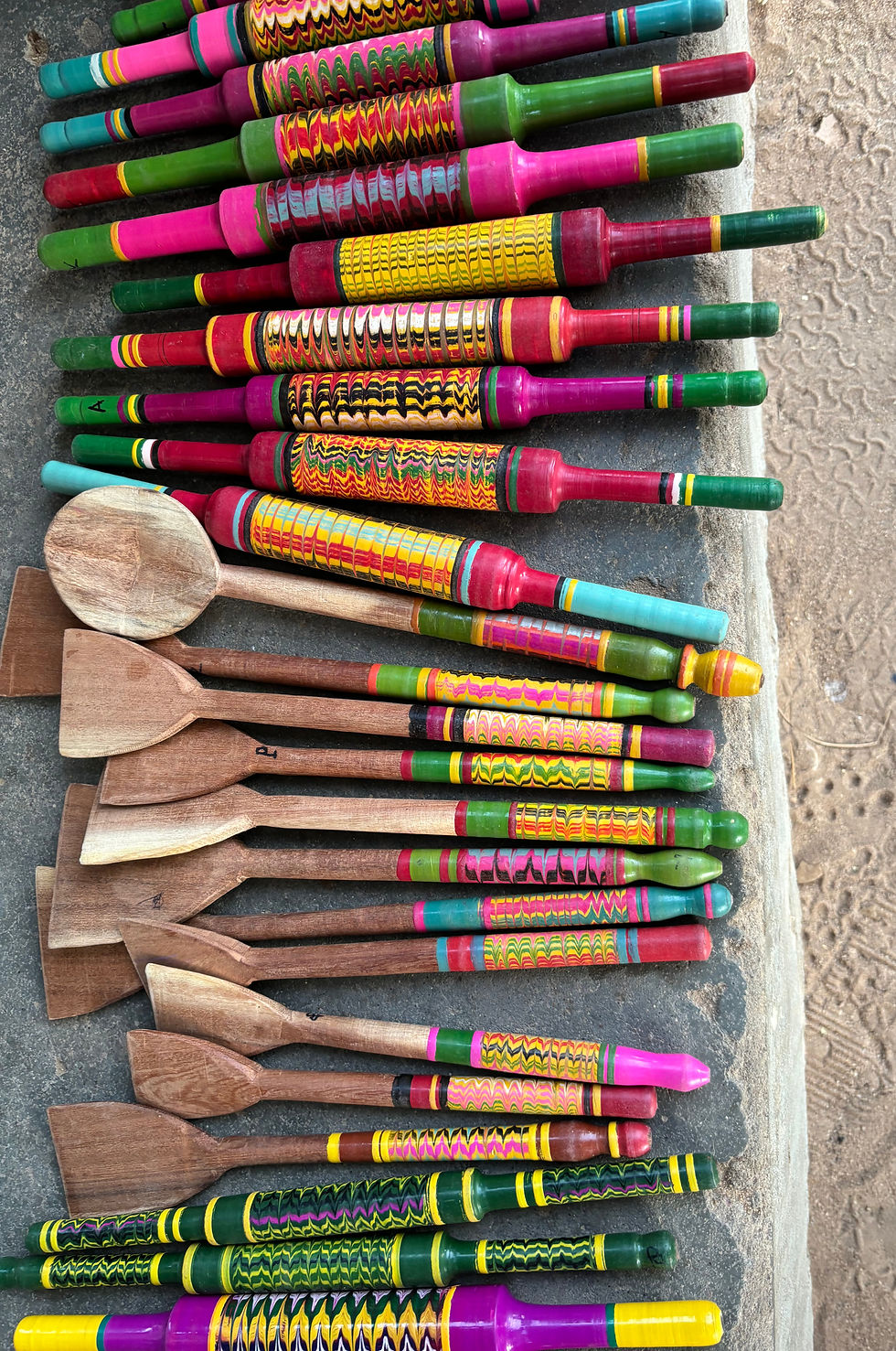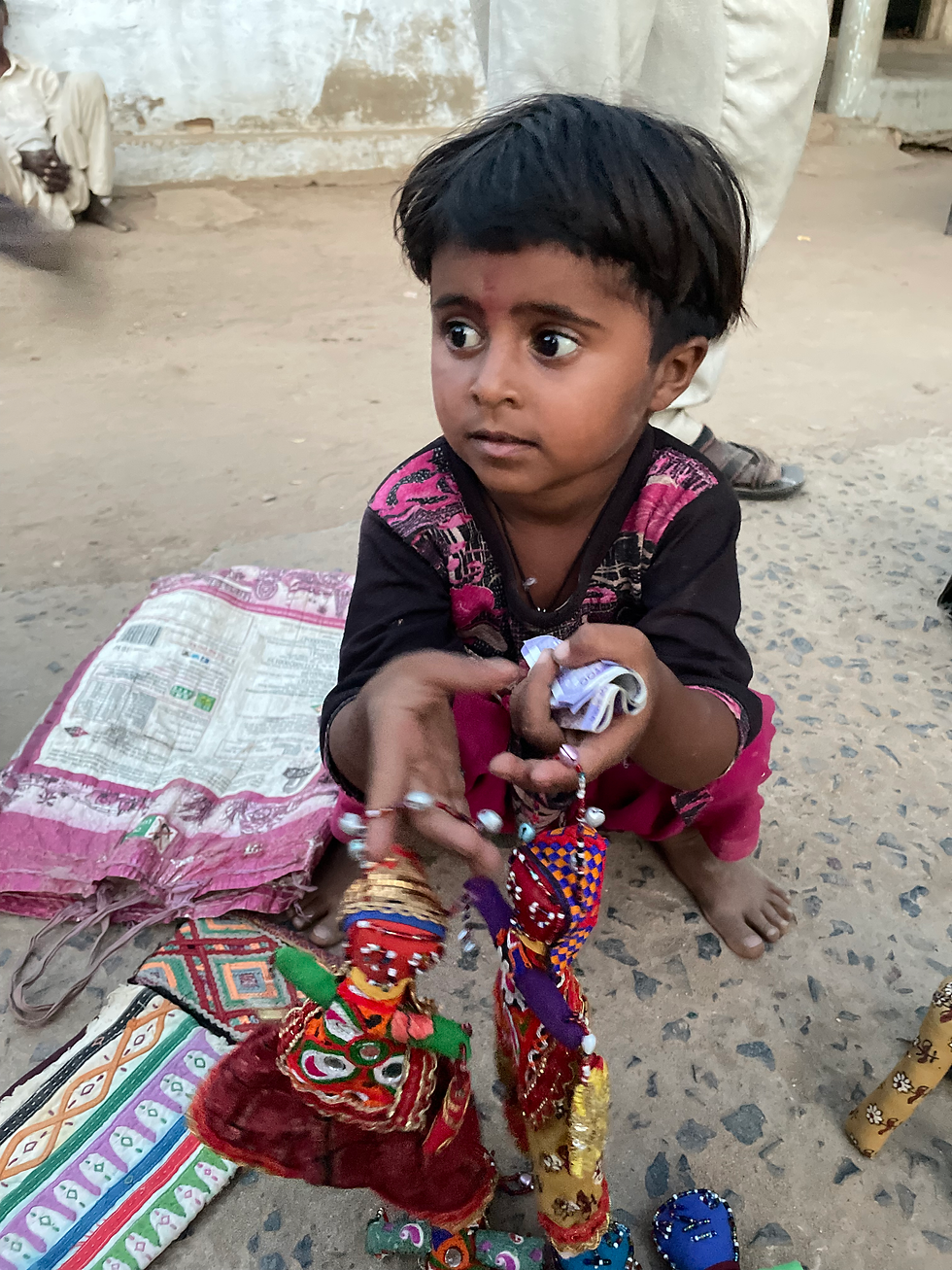Woven Stories - The Vadha Community of Nirona
- Sian Warren

- Feb 19
- 4 min read
Updated: Jul 19
Tucked deep in the heart of Kutch lies the village of Nirona - a name that has, over the years, become quietly synonymous with craft. As you enter the village, there’s a subtle sense of rhythm - a calm, dusty stillness broken by the occasional banging of metal or the laughter of children as they cycle between the streets. This is the home of the Vadha community, artisans whose hands have, for generations, brought colour and movement to wooden forms through the age-old practice of lacquerware.
I’ve been visiting Nirona for many years now, and each time, I learn something new and gain a fresh understanding of how resilience sits quietly at the heart of this community.

The Vadhas: From Nomads to Settled Craftspeople
The Vadhas were once a nomadic community, moving across Gujarat’s arid landscape, sourcing wood and natural pigments, and bartering their creations with pastoral Maldhari families. Their life was one of movement, of adapting to the land and its people. But over time and as traditional ways of life were nudged aside by modern economies, the community slowly settled - with Nirona and nearby Jura becoming their key locations.
Today, the community remains deeply tied to their craft, though only a handful of individuals still continue the tradition. Life has shifted - the demand is seasonal, and competition with factory-made goods is real, but the artistry of their work remains untouched. For travellers with a genuine interest in craft and culture, visiting Nirona offers a quiet and powerful connection to a tradition that continues despite the odds.
Inside the World of Lacquerware
The lacquer process is mesmerising in its simplicity and precision. It begins with the shaping of wood which is then placed on a manually operated lathe. As the wood spins, coloured lacquer sticks are pressed against the surface, melting from friction and forming smooth, vibrant patterns. The most iconic among these is the zig-zag, a design that appears deceptively simple until you watch it being created in real time.
The tools are minimal. There are no machines in these homes, no industrial polishers or electric cutters. Just a pair of hands, a basic lathe, and a lineage of knowledge. And while the men typically work the wood, women of the Vadha community contribute in their own way - making small accessories like textile dolls, puppets, and little toys that are sold to visitors. These pieces, while often overlooked, are vital, each item contributing to the community livelihood and carrying its own story of tradition.

More Than Just Colour: The Cultural Role of Lac
Lacquer in India goes far beyond craft. The resin, sourced from the tiny lac insect that thrives on host trees, has long been used in everything from textiles and dyes to cosmetics and even early media like gramophone records and film reels. It’s found in lipsticks, food packaging inks, and was once essential in sealing wax for official government correspondence.
Its natural, non-toxic properties have made it ideal for both industrial and artisanal use. In homes across India, you’ll find lacquer not just in decorative objects, but in the most utilitarian of items - wooden spoons, rolling pins, toys, and jewellery boxes. Each one, an example of how functionality and beauty can coexist.
Challenges Facing the Community Today
Despite its cultural and historical richness, the lacquerware tradition of Nirona teeters on the edge of survival. With tourism forming the bulk of their sales, the community is vulnerable to the ebbs and flows of the season. During the quiet months, the few artisans continuing this craft have to work other agricultural and labour work.
While a few NGOs, such as Khamir, and individuals offer valuable support - helping stock items year round or offering training, healthcare access, and education - the bigger challenge remains: how to bring this craft into broader public awareness without diluting its essence.
It’s easy for crafts like this to slip into the category of the “quaint” or “exotic” - admired briefly, photographed often, but rarely sustained. But what the Vadha artisans offer is something far deeper: a living archive of resilience, innovation, and artistry that deserves both preservation and participation.

Final Thoughts
There’s something deeply humbling about watching Lalji bhai - one of the veteran artisans I’ve come to know over the years - as he effortlessly spins his lathe in the courtyard of his community dwelling. Other community members watch, while many start unwrapping some finished products ready to sell. It’s not flashy. It’s not performative. It’s just life - colourful, raw and deeply rooted. If you ever find yourself in Kutch, make your way to Nirona. Spend time with the Vadha community. Ask questions. Listen. Buy directly from them if you can. And perhaps most importantly, carry their stories forward - because craft like this doesn't survive in isolation. It thrives when we connect to it.


Comments